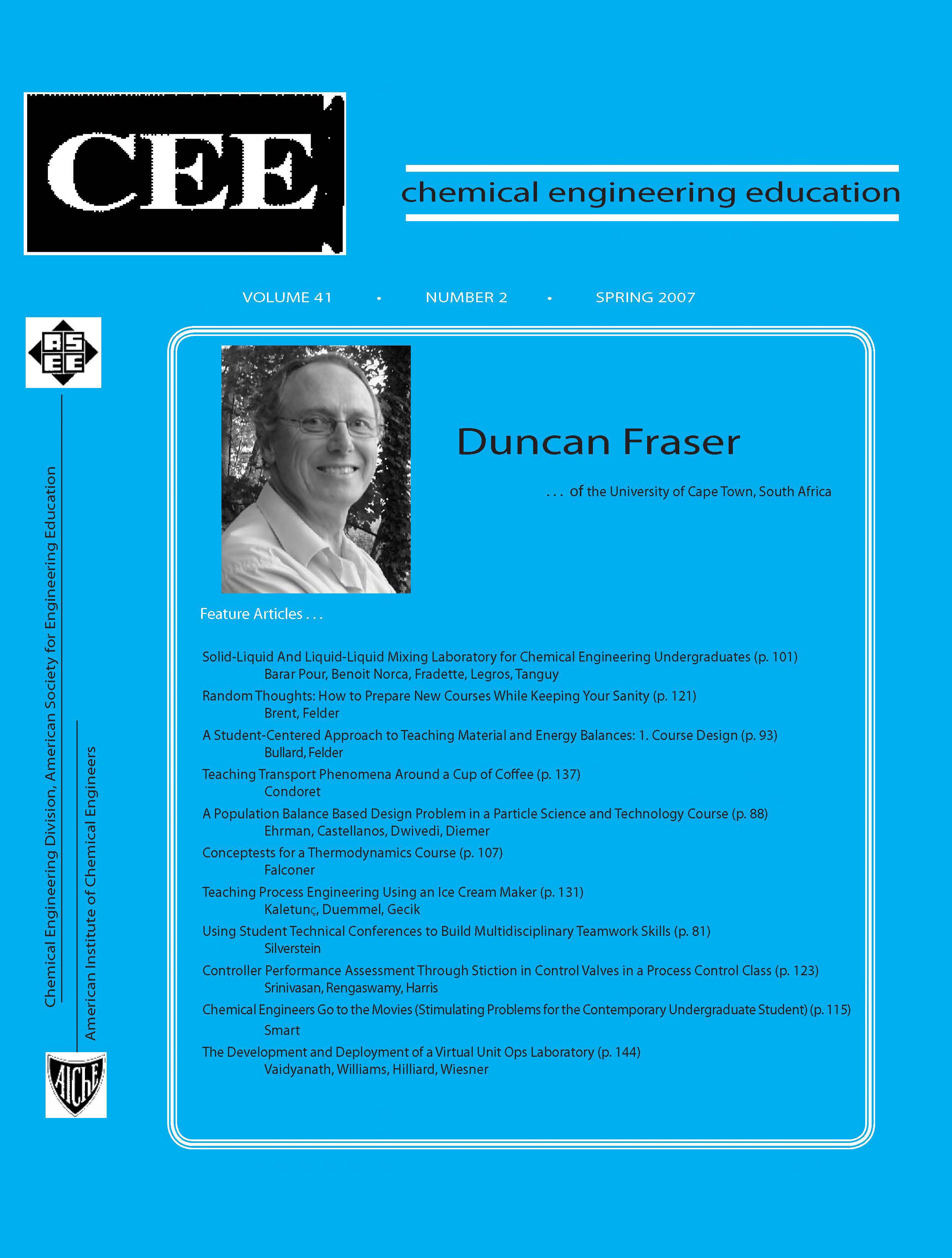Controller Performance Assessment in Process Control Class Through Stiction in Control Valves
Abstract
In this paper, we discuss a simple liquid level experiment that can be used to teach nonlinear phenomena in process control through stiction in control valves. This experiment can be used to introduce the undergraduate students to the area of Controller Performance Assessment (CPA). The experiment is very easy to set-up and demonstrate. While there is an inherent value to teaching stiction in an undergraduate class because of its importance, this experiment can also be used to reinforce control design concepts.


